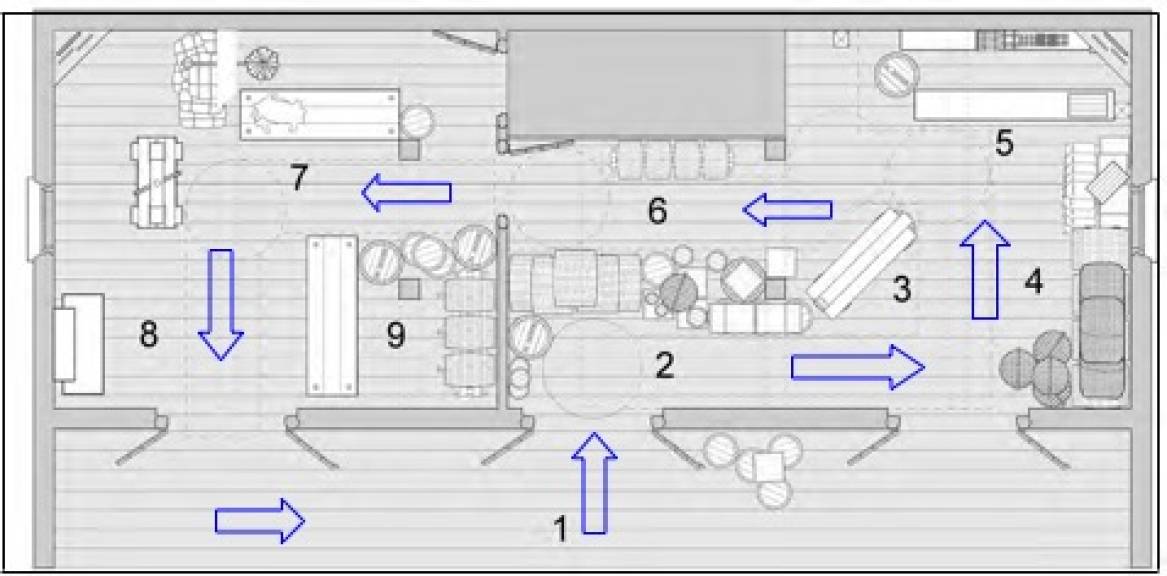Clerks Trade History & Magazin
The North American region bordering the shores of the Pacific boasts a rich history of vibrant trade networks and exchange practices among its First Nations communities. Within this region, native peoples in California and Alaska developed unique systems of exchange to facilitate trade and communication with neighboring tribes.
Exchange practices among indigenous communities emphasized reciprocity, the establishment of relationships, and the sharing of wealth and resources. “Potlatches” and barter systems (exchange of goods for other goods without using money) created bonds within communities and strengthened intertribal relationships.
The value placed on generosity and community welfare was greater than an individual accumulation of wealth. A dominant component of this trade system, especially in Alaska, was gift-giving ceremonies known as "potlatches." Potlatches were elaborate events where individuals or families would give away valuable items to establish social relationships.
Another common practice was the barter system, where goods were traded directly between individuals or groups. Bartering occurred at trade fairs, gatherings, or through informal meetings, fostering intercultural connections and cooperation.
Pomo peoples in California practiced a system where a group with surplus food would extend invitations to others to join the feast. Upon arrival, the guests would bring clamshell or magnesite beads, a reddish stone, which they exchanged for food provisions to take home. In addition to food, various items such as bows and arrows, arrowheads, obsidian blades, belts, robes, feathers, and skins were exchanged. The tribe which possessed a significant salt deposit in their territory, expected to receive goods from invited individuals who sought to obtain salt. Renowned for their adeptness in numerical calculations, the Pomo demonstrated proficiency in comprehending and utilizing numbers in the thousands.
The exchange system practiced by First Nations communities differed greatly from the European-based exchange system of the 19th century. These European trade practices was heavily influenced by mercantilism and focused on profit-driven commercial transactions. In contrast, the trade networks among native peoples in North America were deeply rooted in cultural and social connections.
European explorers and traders introduced glass beads to North America which quickly became highly sought after and embedded into the local trade networks. Trade beads, often made of glass, were small, colorful, and easily transportable, making them ideal for trade purposes. They held significant cultural and symbolic value and were used as a form of currency in exchanges.
During the Russian era at Metini / Fort Ross, three onsite warehouses supplied the settlement and its inhabitants. The reserve store contained company-owned trade goods and fur storage. The trade store sold supplies that employees could purchase with cash or credit. The materials store stocked essential tools and supplies for work at the settlement. Each warehouse played a critical role in sustaining the colonies. The magazin, which means “store” in Russian, was the office of the Clerks.
The reconstructed Magazin allows us to show and tell about these commercial activities that occurred at Metini / Fort Ross between 1812-1841. The reconstruction of the Magazin in the fort was based on archaeological evidence, extensive research, and comparisons to buildings at other Russian American Company (RAC) settlements. The building has been constructed in a similar manner to the original structure and interprets the role of all three warehouses.
Every item in the building is intended to be handled or touched — with proper supervision. Students can explore trade from all over the world brought in for trade or purchase by company employees. They can see examples of the food grown at the fort. They can also get hands-on with furs of many of the animals hunted or otherwise utilized by the fort.
Click here for the Fort Ross Magazin brochure.

Magazin Layout –
- Front Porch
- Incoming Shipments (One of each item will be able to be taken down from the shelf to touch and look at. If an item seems stuck, please do not pull it off the shelf).
- Work Table
- Warehouse Storage
- Company Store/ Trade Store
- Consumable Goods
- Fur Processing (Students may touch the furs on the table. Each pelt has the animal identified on the leather side. Additional furs hanging from the beams and on the back wall are not to be touched or taken down. Students, Clerks and Hunters Activity Groups, may also use the fur press and scale.)
- Storekeeper/ Clerk’s Area (Items on this desk and in the trunks are for use by the Clerks Activity Group)
- Material Store
Exhibit Research and Design – Exhibits in the magazin were developed through extensive research into primary source documents, including the Khlebnikov archive and shipping manifests. All items in the warehouse are recorded as having been there. The fur press, fur bales, and certain other objects are based on records from the Hudson Bay Company and work done by the National Park Service at Fort Vancouver in Washington state.
Since many of the items the Russians traded were from British and American merchants, many of the crates are in English. Others are in Spanish, Russian, or Chinese languages. The company names and places are made up, but are historically appropriate. Some company names are actually the names of merchant ships on the RAC ship manifests.
Objects have been packed as they would have been 200 years ago. Ceramics and many other goods were often shipped in barrels or crates and were packaged in excelsior or straw. Bottles were shipped in crates with separate compartments. Gin, rum, wine, and ale were listed as items traded with the missions. Fabric, blankets, and other textiles were shipped in bales. More expensive cloth was shipped in crates like the one on display. Silk was imported from China, as was inexpensive muslin. Woolen fabrics like blankets or flannel and velvet may have been imported from Britain or New England. Grain and flour was shipped in sacks or in barrels.